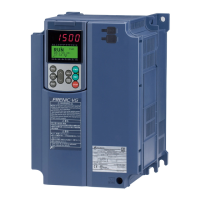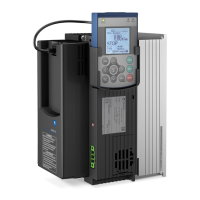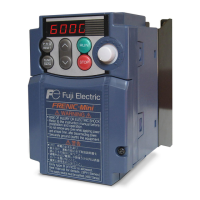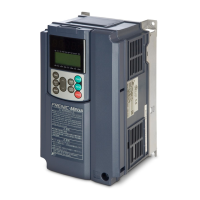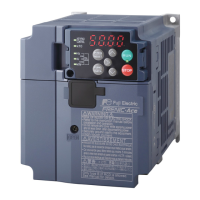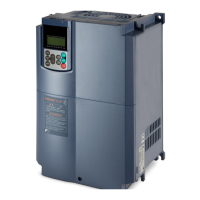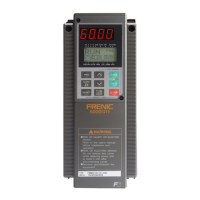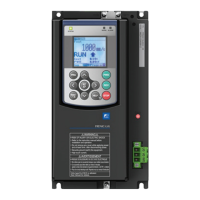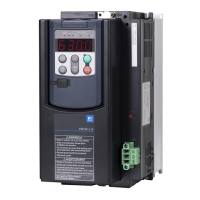9.1 Function Code Tables
9-1
Chap. 9 FUNCTION CODES
9.1 Function Code Tables
Function codes set up the FRENIC-Mini series of inverters to match your system requirements.
Each function code consists of a 3-letter string. The first letter is an alphabet that identifies its group and
the following two letters are numerals that identify each individual code in the group. The function codes
are classified into seven groups: Fundamental Functions (F codes)
, Extension Terminal Functions (E
codes), Control Functions of Frequency (C codes), Motor Parameters (P codes), High Performance
Functions (H codes), Application Functions (J codes), and Link Functions (y codes).
Changing, validating, and saving function code data when the motor is running
Function codes are indicated by the following based on whether they can be changed or not when the
motor is running:
- Function codes marked with N (in the "Change when running" column of the function code tables
given below): The data of these codes cannot be changed when the motor is running.
- Function codes marked with Y: The data of these codes can be changed with
and keys
regardless of whether the motor is running or not. Pressing the
key will make the change effective
and save it into the inverter's memory.
- Function codes marked with Y*: The difference from function codes marked with Y and these is that
if the data of these codes is changed, the change will immediately take effect; however, the change is
not saved into the inverter's memory. To save the change, press the
key. If you press the key
to exit the current state without pressing the
key, then the changed data will be discarded and the
previous data will take effect for the current inverter operation.
Copying data
Connecting a remote keypad (option) to an inverter via the RS-485 communications card (option) allows
copying the data stored in the inverter's memory into the keypad's memory (refer to Menu #7 "Data
copying" in Programming mode). With this feature, you can easily transfer the data saved in a source
inverter to other destination inverters.
If the specifications of the source inverter and destination inverter differ from each other, some data may
not be copied to ensure safe operation of your power system. Whether data will be copied or not is
detailed with the following symbols in the "Data copy" column of the function code tables given below.
Y: Will be copied unconditionally.
Y1: Will not be copied if the rated capacity differs from the source inverter.
Y2: Will not be copied if the rated input voltage differs from the source inverter.
N: Will not be copied.
If necessary, manually set the function code data that cannot be copied.
Using negative logic for programmable I/O terminals
The negative logic signaling system can be used for the digital input and output terminals by setting the
function codes specifying the properties for those terminals. Negative logic refers to inverted ON/OFF
(logical value 1 (true)/0 (false)) state of input or output signal. An ON-active signal (the function takes
effect for the ON signal.) in the normal logic system is functionally equivalent to OFF-active signal (the
function takes effect for the OFF signal.) in the negative logic system.
To set the negative logic system for an I/O signal terminal, display data of 1000s (by adding 1000 to the
data for the normal logic) in the corresponding function code and then press the
key.
For example, if a coast-to-stop command (BX: data = 7) is assigned to any one of digital input terminals
X1 to X3 by setting any of function codes E01 through E03, then turning (BX) ON will make the motor
coast to a stop. Similarly, if the coast-to-stop command (BX: data = 1007) is assigned, turning (BX) OFF
will make the motor coast to a stop.
Limitation of data displayed on the LED monitor
Only four digits can be displayed on the 4-digit LED monitor. If you enter more than 4 digits of data
valid for a function code, any digits after the 4th digit of the set data will not be displayed, however they
will be processed correctly.
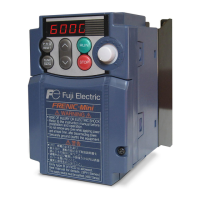
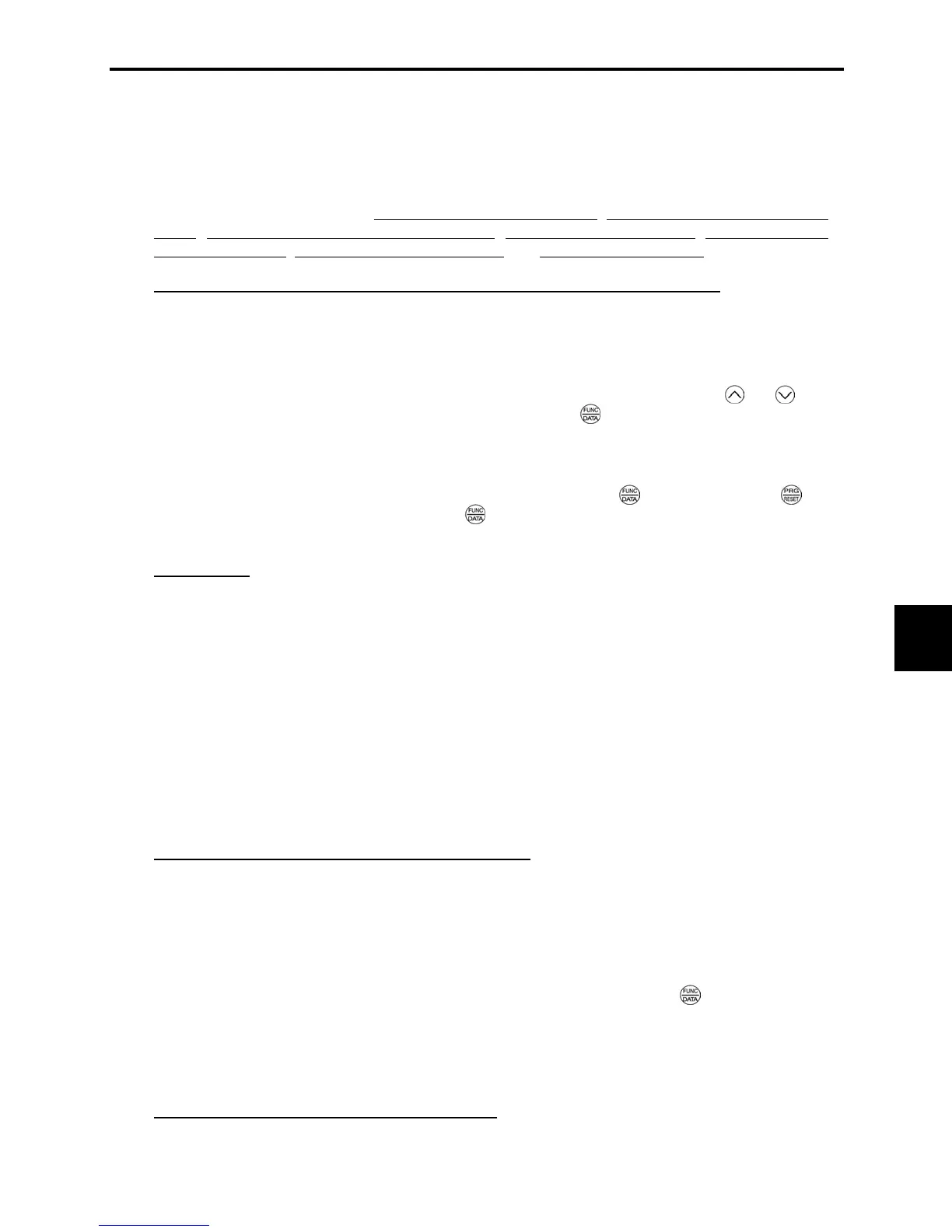